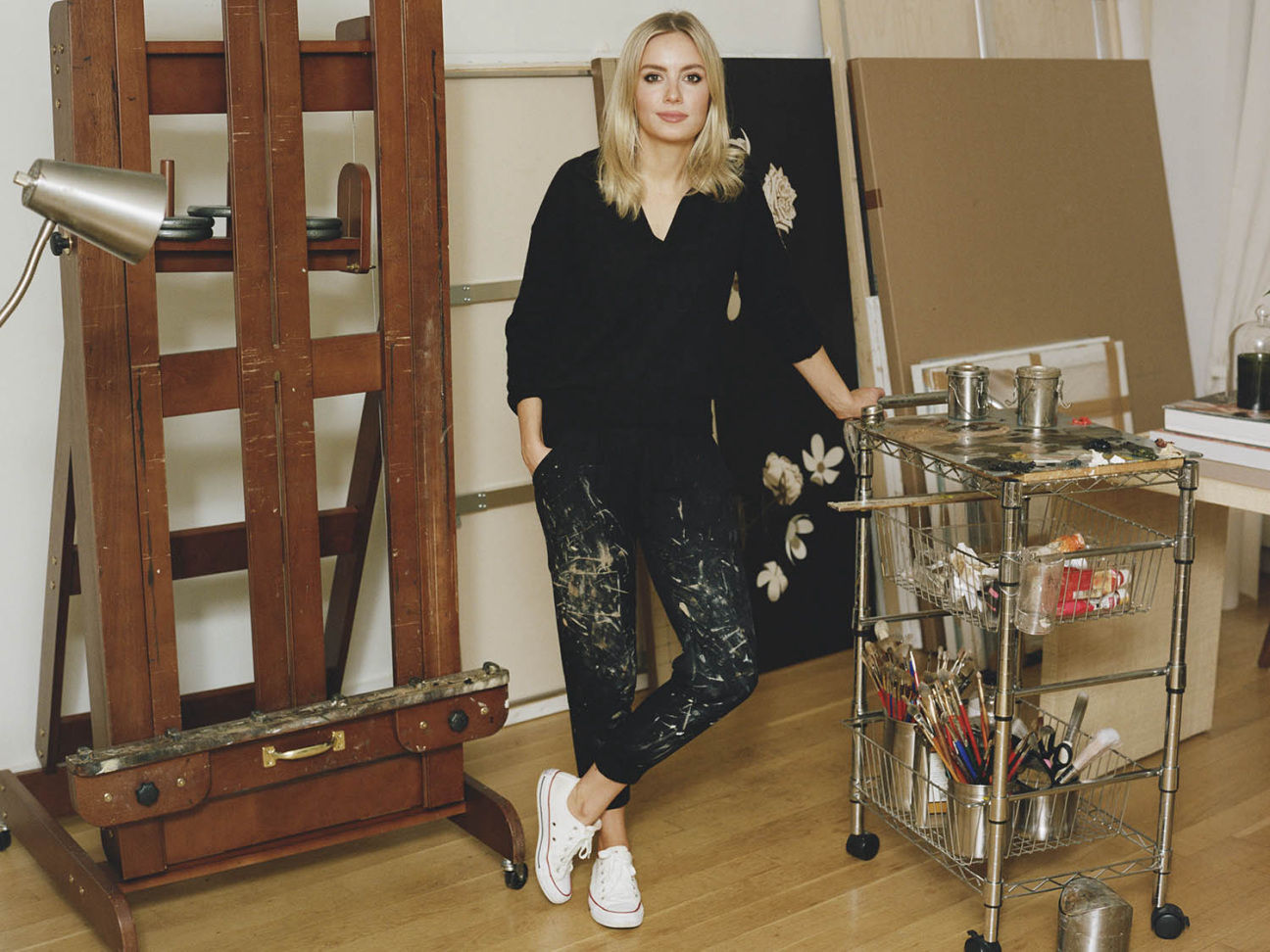
Anna Weyant’s studio does not afford the figurative painter much distance from the task at hand. Her desk, the paints, the kitchen, the library, and even the door are all one well-calculated pivot away in what constitutes a living room on New York’s Upper West Side. If something goes wrong in one of her larger-than-life compositions, she’s nose-to-nose with it. She’s up to her eyeballs. In this unflinching proximity, Weyant taught herself to kill her darlings. And how do you make critical cuts to work so close it feels like a limb? Sometimes you need scissors.
On a fall visit, the 27-year-old is tucked in with Sprout, her dog, duking it out with her largest canvases to date for her hotly anticipated Gagosian debut in November. The New York gallery, whose volumes have historically dwarfed the ego of any artist self-inflated enough to try to fill them, earns the distinction of being a monster worthy of Weyant’s morbid curiosity.
“I get a rush from exhibiting,” Weyant says. “My desire to do it outweighs my desire to cancel and move to Utah.” This paradox is at the center of her practice: Weyant actively grapples with her shyness and simultaneous desire to be seen in her paintings, which usually feature young white women often caught mid-compromise undermined by sexiness and camp’s double-edge. The violence arrives implied and soft; it is a very particular strain—the kind tied to the legends of visible women like Marilyn Monroe and Billie Holiday, whose historians seem more obsessed with how they suffered than with their beauty or talent. Weyant’s subjects aren’t necessarily celebrities, just young women she knows well enough to ask for the more provocative poses she needs from sitters. Performed in the privacy of her studio, Weyant’s process is not about traumatizing and subjugating, but rather is an exploratory game of pretend that allows the artist and her intimate to try on, without threat, the same bitter plot lines some people fantasize punishing young women with.
The finished pictures strum art-historical notes—like Balthus’s brooding erotica, Domenico Gnoli’s fiber fetish, John Currin’s lips, Lisa Yuskavage’s flowers. Weyant’s lonely girls wear the defeated postures of the martyrs who’ve come before them, but there’s more agency and humor lurking underneath. The exhibition’s title, “Baby, It Ain’t Over Till It’s Over," furthers the allusion. “This one feels really personal for a million different reasons,” Weyant says, pausing for a moment to consider. “I guess I just liked the idea of having these girls take up so much space.”










 in your life?
in your life?

